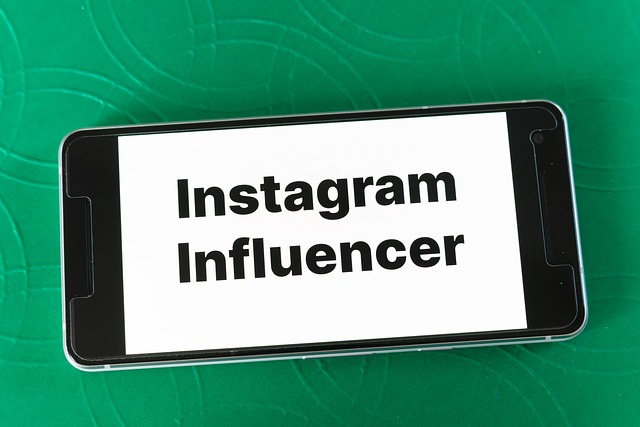Introduction: Why 2023 Matters for Marketers
The digital free-for-all of the past few years is over. Consumers aren’t out to be dazzled—they want relevance, speed, and substance. Post-2022, attention is earned with clarity and value, not noise. People are tuning out fluff faster, and they expect brands to either understand their needs or step aside.
At the same time, ad budgets aren’t what they used to be. Economic pressure has forced marketing teams to get lean and cut the sugar—meaning less trial-and-error, more deliberate moves. Strategy now beats splash. Every piece of content, every dollar spent, is expected to have purpose.
And it’s becoming obvious: some brands are built for this new pace. Agile. Focused. Data-savvy without losing the human feel. Others are clinging to old playbooks. That gap? It’s growing. 2023 isn’t just another year—it’s the dividing line between marketers who adapt and marketers who vanish.
Influencer Marketing Gets More Strategic
Influencer marketing isn’t new—but in 2023, it’s getting more focused and more accountable. Instead of blowing budgets on mega-stars with bloated followings, brands are turning to micro and nano influencers. Why? These creators have smaller but tighter-knit audiences. Their followers engage more, trust more, and convert better. It’s not about reach; it’s about relevance.
One-off promo posts are taking a backseat to long-term deals. Marketers are looking for creators who can become true brand advocates, not just rented billboard space. Building trust takes time, and audiences can smell short-term fluff. So it’s all about repetition, story, and staying plugged into the community vibe.
At the same time, accountability is finally catching up with hype. Thanks to smarter ROI tracking tools, campaign performance is no longer a guessing game. Marketers can see what actually moved the needle—clicks, sales, shares—and adjust in real time. The age of “post and hope” is over.
Quick pitch: want more on dialing in your influencer game? Check the deep dive here: How to Use Influencer Marketing Effectively.
AI-Powered Personalization
Marketers no longer need to guess what customers want—they’re getting the answers in real time. With user behavior tracked across websites, apps, emails, and beyond, brands can now deliver eerily relevant messages the second a customer pauses their scroll. It’s not magic—it’s machine learning parsing live data points to fine-tune targeting on the fly.
Email subject lines that shift based on past clicks. Product recommendations that hit closer to home with every interaction. Ad creatives that evolve mid-campaign based on who’s biting. This is the new standard: personalization without the lag.
But with more power comes a tighter rope to walk. Getting personal is smart—until it feels invasive. Nobody likes being followed too closely by a sneaker ad that somehow knows what color you almost bought. Brands that win in 2023 will strike the balance: effective, invisible, human. When AI is used right, it doesn’t just drive conversions—it makes the experience feel frictionless.
Short-Form Video Rules Attention
TikTok still owns the short-form crown, but YouTube Shorts and Instagram Reels are climbing fast. The race isn’t about platform loyalty anymore—it’s about who can grab attention in under three seconds. That’s the new threshold: if your first few seconds don’t hit, your content gets skipped, buried, or forgotten.
Creativity has adapted. The best short-form creators use hook-first tactics—posing a question, hinting at drama, or showing a payoff before you even realize you’re watching. This is storytelling compressed down to fast punches and clean arcs.
Brands see this too. They’re blending their polished budgets with raw user-generated content. Sponsored Shorts that feel like they were made on someone’s lunch break are outperforming million-dollar campaigns with studio gloss. The production line is bending: authenticity fused with funding now outperforms either alone.
For creators, the challenge is simple but brutal. Say something worth saying fast—or get drowned out by someone else who did.
Content with a Cause
Consumers aren’t just shopping with their wallets—they’re shopping with their conscience. In 2023, the question isn’t whether your brand supports a cause, but whether that support holds water. People are pulling back the curtain and asking, “Do you actually believe this, or are you riding a trend?”
Authenticity beats performative gestures, every time. Tossing up a black square or dropping a vague climate message isn’t just ineffective—it’s actively damaging. Today’s audiences are tuned in and quick to call out hollow campaigns. The winners? Brands that live their values, bake them into the business model, and show proof over time.
Examples speak louder than hashtags. Patagonia doubled down on climate advocacy by literally giving away its profits to fight environmental collapse. Ben & Jerry’s continues to run bold, issue-focused campaigns that align with their long-standing mission. And smaller players like Mejuri are gaining ground by supporting underrepresented creatives and making that part of their culture—not just their content.
The takeaway: cause marketing only works if the cause runs through the veins of the company. If it doesn’t, people will notice. Quickly.
Search Is Changing (Again)
The way people search is evolving—fast. Voice assistants and visual search tools are no longer niche; they’re becoming daily habits. Users expect to speak or snap a photo and get instant, accurate results, not scroll through pages of fluff.
Google’s response? Smarter algorithms built to decode intent, not just keywords. That means classic SEO tricks—like stuffing pages with low-value buzzwords—are going extinct. Marketers now need to craft content that actually answers questions, solves problems, or provides context that keeps a user engaged. It’s less about technical gaming, more about real usefulness.
To show up where it counts, brands need to shift gears. Think about keywords as doorways, not destinations. Focus on natural phrasing, conversational structure, and helpful visuals—all tuned for how people actually search in 2023. Intent-driven content wins the ranking war. Everything else fades into the algorithm’s blind spot.
Owned Channels Make a Comeback
As algorithm-driven platforms become more unpredictable and saturated, marketers are doubling down on assets they can fully control. Owned channels—like email lists, private communities, and direct content subscriptions—are resurging as high-value tools for meaningful engagement.
Email Newsletters: From Afterthought to Premium Content
Newsletters are no longer just corporate updates—they’re being reimagined as high-value, standalone content streams. In 2023, the best email newsletters offer curated insights, exclusive offers, and content that feels too good to ignore.
- Brands are building newsletter subscriber bases with unique content not found elsewhere
- Newsletters are becoming monetizable products with built-in loyalty
- Personalized delivery timing and segmentation is improving open and click-through rates
Rise of Private Communities
With public platforms becoming crowded (and often divisive), direct community building is taking center stage. More marketers are investing in:
- Discord servers for real-time engagement and brand culture
- Slack groups for niche professional communities
- Private forums that allow more thoughtful, long-form discussion
These spaces build loyalty faster than passive broadcasting ever could.
Rented Platforms vs. Owned Audiences
Every post on a social platform is at the mercy of its algorithm. In contrast, owned audiences give marketers direct access—and more control.
- Rented platforms (like Facebook, Instagram, or TikTok) own the connection to your followers
- Owned channels (like email, SMS, and private communities) let brands communicate without gatekeepers
Takeaway: In 2023, smart brands aren’t abandoning social—they’re simply rebalancing the scales to invest in platforms they own, not rent.
Conclusion: The Smarter, Leaner Marketer Wins
2023 isn’t the year to chase trends for the sake of noise. It’s the year for ruthless focus—on strategy, on tools that work, and on content that delivers actual value. Budgets are tighter. Attention spans are shorter. The room for bloated campaigns and vague messaging has vanished.
Winning means staying flexible. Read your data, adapt quickly, and don’t overcomplicate what works. Whether it’s doubling down on email or refining your short-form video hooks, timing matters more than flash.
The golden rule this year? Clarity over chaos. Marketers who can cut through the static with sharp, grounded messaging will rise. Those who stick to surface-level glitz won’t. Stay sharp. Keep it clean. Deliver what matters.



